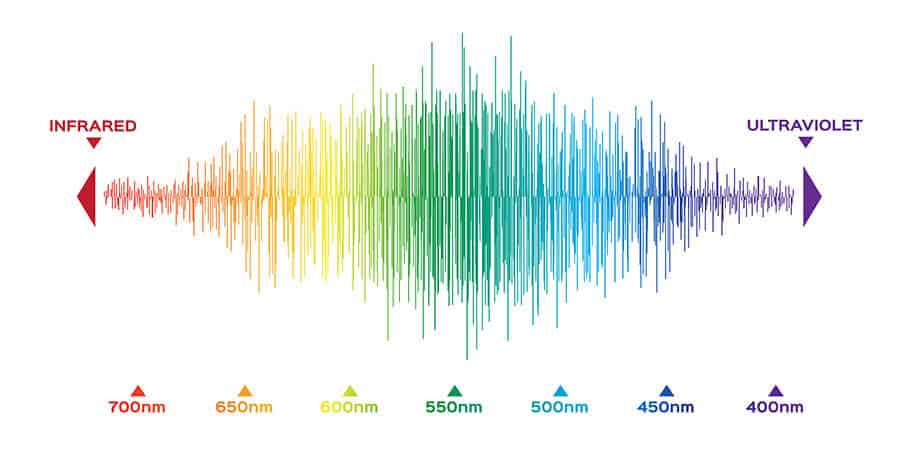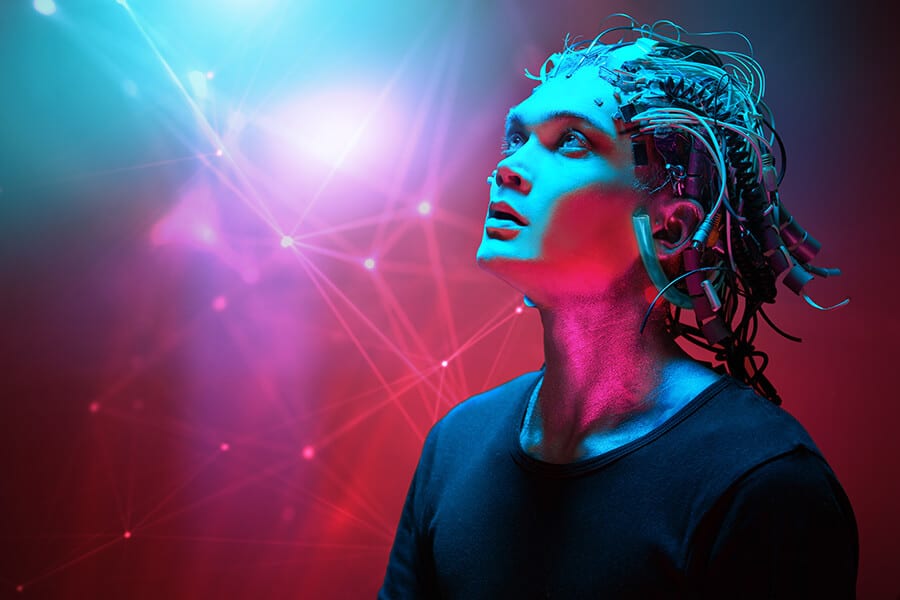The definition of a cyborg is a person whose physical abilities are extended beyond normal human limitations by mechanical elements built into the body. Based on this loose definition, many humans can be considered cyborgs. However, there are people who have actually been legally recognized as cyborgs. Neil Harbisson may have been one of the first to be classified a real-life cyber human. It is likely, however, that there will be more in the future, especially since more than 70% of people surveyed are willing to augment their brains and bodies in order to improve their employment prospects.
According to Fortunly, a majority of the population is willing to transform their bodies. While this survey was specifically directed at career-oriented subjects, people have other reasons to become cyborgs. Most commonly, people who have lost limbs or their sight have been the most enthusiastic about finding a technological solution. The crazy thing about these computer-powered alternatives is that they can be stronger, faster, and more powerful than the natural body parts that humans are born with. This is one of the appeals of merging bodies with tech.
Neil Harbisson – The First Cyborg
Neil Harbisson was the first person in the world to be equipped with an antenna implanted in his skull. He is a Spanish-born British-Irish cyborg artist and an activist for transpecies rights, based in New York City. Harbisson became the first person in the world to be legally recognized as a cyborg by a government. He considers his antenna to be a part of his body as it allows him to hear color, which he cannot otherwise experience due to being born achromatic, or color-blind.
Having this antenna has caused him some issues in his life. Back in 2014, his British passport renewal was rejected because the photo he used contained an electrical device on his head. He had to appeal, arguing that he should identify as a cyborg and that the antenna should be treated as an organ instead of just a device. Harbisson’s photo ended up being accepted after a few weeks of correspondence with the British embassy.
Earlier, in 2011, Harbisson was at a demonstration in Barcelona. The police thought that they were being filmed through his antenna, and they damaged it. Instead of filing for damages to personal property, he filed a complaint for physical aggression. Although he can function without the antenna, it sends audible vibrations through his skull to report information to him.
Harbisson’s Cyborg Abilities
The Cyborg Antenna is a sensory system that was created to extend color perception, and it is implanted as well as osseo-integrated in Harbisson’s head. It sprouts from within his occipital bone and has been permanently attached to his head since 2004. The antenna implant surgery was repeatedly rejected by bioethical committees but was nonetheless carried out by anonymous doctors.

Beyond the ability to hear color including infrared and ultraviolet light, Harbisson’s antenna has other capabilities. It allows him to measure electromagnetic radiation, transmit music, get phone calls, and even receive videos or images that are translated into audible vibrations. Since the antenna is WiFi-enabled, it allows him also to receive signals and data from satellites.
Harbisson has given permission to five of his friends, each living on a different continent, to send information directly into his head. If he receives color information while asleep, his friends essentially have the power to color and alter his dreams. The first public demonstration of a skull-transmitted image was actually live streamed on Al Jazeera’s chat show, “The Stream”. He also had Ruby Wax make a phone call directly into his skull.
Another cyber-addition to his body is a solar crown to give him a sense of time. It is a rotating point of heat, and it takes 24 hours to orbit around Harbisson’s head. For example, when he feels it in the middle of his forehead, it is midday solar time in London. His aim is to incorporate Albert Einstein’s theory of time relativity into practice by creative time illustrations. The idea is to create an organ for the sense of time which will subsequently allow him to stretch or control his perception of time, age, and time travel.
Finally, Harbisson also has a transcendental communication system in the form of a Bluetooth tooth. The system is composed of two teeth that contain a Bluetooth-enabled button as well as a mini vibrator. One of these teeth is installed in Harbisson’s mouth and another in his cyborg friend Moon Riba’s mouth. They use morse code to communicate from tooth to tooth. This private method of communication could be useful in a variety of real-life situations.
Moon Riba
Also born in Spain, Moon Riba is often described as the first female cyborg and cyborg artist. She is best known for creating and implanting seismic sensors. These sensors vibrate whenever there is an earthquake on the planet. The sensor is permanently attached to Riba’s elbow, and it vibrates at different levels depending on the intensity of each earthquake. It is wirelessly connected to online seismographs allowing her to feel earthquakes from all over the world. Riba has worn this sensor since 2013 and uses it to create dance pieces.
She has also experimented with kaleidoscopic vision and 360° perception via earrings. And she has created a speedometer glove that allows her to perceive the exact speed of any movement around her through vibrations on her hand. In addition to this she also creates art and has co-founded the Cyborg Foundation as well as the Transpecies Society along with Harbisson.
Cyborg Foundation
In addition to creating art, Harbisson and Riba have also co-founded the Cyborg Foundation. It is a non-profit international organization that raises awareness about cyborgs, defends their rights, promotes their art, and supports people who want to be cyborgs. The Cyborg Foundation was founded in 2010, and one of the main pages is called “Design Yourself.” It explains that cyborgs are the union between cybernetics and organisms.
The organization explains that since both cybernetics and organisms are in exponential evolution, the definition of cyborg is also in constant flux. That being said, the Cyborg Foundation defines cyborgism as a different type of relationship between technology and organisms. They outline the difference between the technology that allows you to know things and the technology that allows you to feel things. The Cyborg Foundation mainly focuses on Artificial Senses (AS) where the stimuli are gathered by the technology but the intelligence is created by the human – as opposed to Artificial Intelligence (AI) where the intelligence is created by the machine itself.
The website also explains the rights that cyborgs possess and therefore have the right to defend. These were created in 2016 and focus on defending cyborg civil liberties as well as the sanctity of cyborg bodies. They foresee a battle for the ownership, licensing, and control of augmented, alternative, and synthetic anatomies. The general rights include the freedom from disassembly, freedom of morphology, equality for mutants, the right to bodily sovereignty, and a right to organic naturalization.
Harbisson and Riba also co-founded the Transpecies Society in 2017. It is an association that gives a voice to people with non-human identities. It also raises awareness of the challenges that transpecies face as well as advocates for the freedom of self-design and offers the development of new senses and organs in the community.
Cyborg Possibilities
Harbisson and Riba are among the most distinguished cyborgs in the world. However, they are not the only ones. According to the official definition, anyone with an artificial limb or organ can be considered a cyborg. In fact, ever since computers were invented, people have been trying to figure out a way to control them with their minds.
As early as 1962, an Oxford University scientist reported figuring out a way to use human brain waves to control a simple slide projector. Around the same time, Yale University neuroscientist José Delgado invented a radio-controlled device that delivered tiny shocks to the cortex that could control the actions of a bull with the implant.
Today there are hundreds, if not thousands, of people with implants that give them abilities beyond those that they were born with. In addition, some people have been able to get certain abilities back after losing senses, limbs, etc.

Even Elon Musk, the founder and CEO of Tesla and SpaceX is interested in the cyborg world. In 2019, he unveiled a secretive company called Neuralink. It develops brain-machine interfaces with the goal of implanting devices in paralyzed humans, allowing them to control phones and computers.
It sounds far-fetched, but in October 2019 we saw a paralyzed man walk in a suit that he controlled with his brain. Thibault had been paralyzed for over four years after falling nearly 50 feet (15 meters.) He got two implants on the surface of his brain. Initially, he practised using the brain implants to control a virtual character, or avatar, in a computer game. Once he got good enough at it, he was able to walk in an exoskeleton suit created for him.
The world of cyborgs seems like it belongs in a science fiction movie, however it is real and we are already living in it. While cyborgs such as Harbisson and Riba have dedicated their lives to self-design and improvement, others are cyborgs by necessity. According to the definition, a cyborg is a person whose physical abilities are extended beyond normal human limitations by mechanical elements built into the body.
This can include people with 3D-printed organs or limbs, people with hearing aids, and those with implants that allow them to see again. There are even wafer-thin tattoo electrodes that can monitor brain activity and have other medical uses. The future of cyborg technology is realistic and will change the way that human beings live and experience the world around us.
Photos: Shutterstock
Support us!
All your donations will be used to pay the magazine’s journalists and to support the ongoing costs of maintaining the site.
Share this post
Interested in co-operating with us?
We are open to co-operation from writers and businesses alike. You can reach us on our email at cooperations@youthtimemag.com/magazine@youthtimemag.com and we will get back to you as quick as we can.










